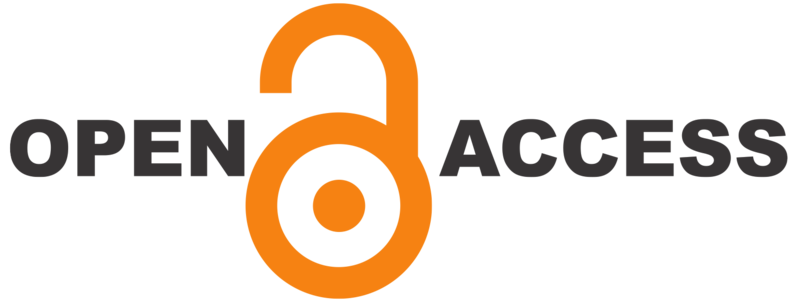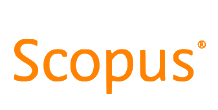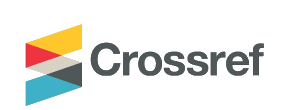An integrative literature review of the implementation of micro-credentials in higher education: Implications for practice in Australasia
DOI:
https://doi.org/10.21153/jtlge2021vol12no1art942Keywords:
micro-credentials, digital badges, higher educationAbstract
Micro-credentials research, which includes digital badges, is a relatively new field of study that seeks to inform the implementation, portability and sustainability of the ecology of meaningful delivery. This paper reviews literature relevant to understanding connections between universities’ intent to offer micro-credentials and the environment that is needed to do so. From this integrated study, the paper distils a number of core concerns and identifies some gaps in the literature. One of its primary goals is to clear the ground for the construction of a technical model of micro-credentialing implementation that can be used by the various stakeholders involved in the design and evaluation of new micro-awards. A closely related goal is to help those participating in micro-credentialing research to locate and understand each other’s contributions, as fragmentation in research related to micro-credentials makes progress in the field slow. Hence, this review draws together research in the field to identify research foci and gaps, and then also capture some work by micro-credentialing researchers that directly attempts to model the main relationships in the field. The paper ends with a summary of implications for practice, especially for the Australasian higher education context
Metrics
References
Abramovich, S. (2016). Understanding digital badges in higher education through assessment. On the Horizon, 24 (1), 126–131.
ACODE (2019) Australasian Council on Open, Distance and eLearning website. Retrieved from: https://www.acode.edu.au
Australian Bureau of Statistics. (2020). Labour Force, Australia. May 2020. 24 June. Retrieved from: https://www.abs.gov.au/ausstats/abs@.nsf/mf/6202.0
Barabas, C., & Schmidt, J. P. (2016). Transforming chaos into clarity: The promises and challenges of digital credentialing. USA: Roosevelt Institute. Retrieved from: http://rooseveltinstitute.org/promises-and-challenges-digital-credentialing
Callaghan, R. (2019). Surge in university micro-credentials. The Australian Financial Review. Melbourne. 23 May.
Calonge, D., Shah, M., Riggs, K., & Connor, M. (2019). MOOCs and upskilling in Australia: A qualitative literature study. Cogent Education. 6(1). Retrieved from: https://www.tandfonline.com/doi/full/10.1080/2331186X.2019.1687392
Campus Morning Mail. (2019). Micro-credentials: They will be a happening thing. 12 December. Retrieved from: https://campusmorningmail.com.au/news/micro-credentials-they-will-be-a-happening-thing/
Carey, K., & Stefaniak, J. (2018). An exploration of the utility of digital badging in higher education settings. Education Technology Research Development. 66(1), 1211–1229. Available at: https://doi.org/10.1007/s11423-018-9602-1
CEDEFOP. (2019). Global inventory of regional and national qualifications frameworks 2019: Volume 2: National and regional cases. Retrieved from: https://www.cedefop.europa.eu/en/publications-and-resources/publications/2225
Chanthadavong, A. (2020). Australian government to build AU$4.3 million online microcredentials marketplace. ZDNet. 22 June. Retrieved from: https://www.zdnet.com/article/australian-government-to-build-au4-3-million-online-microcredentials-marketplace/
Coleman, J. (2018). Engaging undergraduate students in a co-curricular digital badging platform. Education and Information Technologies. Springer. 23(1), 211–224. DOI 10.1007/s10639-017-9595-0
Czerniewicz, L. (2019). Unbundling and rebundling higher education in an age of inequality. EDUCAUSE. Retrieved from: https://er.educause.edu/articles/2018/10/unbundling-and-rebundling-higher-education-in-an-age-of-inequality
Credential Engine (2019). Making all credentials transparent and revealing the marketplace of credentials. Retrieved from: https://credentialengine.org/
DeakinCo. (2019). Retrieved from: https://www.deakinco.com/
Department of Education, Skills and Employment (2018). Incorporating shorter form credentials into the AQF. Retrieved from: https://docs.education.gov.au/documents/incorporating-shorter-form-credentials-aqf
Department of Education, Skills and Employment. (2019). Performance-based funding for the Commonwealth Grant Scheme. Retrieved from: https://www.education.gov.au/performance-based-funding-commonwealth-grant-scheme-0
Dimitrijevic, S., Devedzic, V., Jovanovic, J. & Milikic, N. (2016) Badging platforms: A scenario-based comparison of features and uses. In D. Ifenthaler, N. Bellin-Mularski & D-K. Mah, (Eds.), Foundation of Digital Badges and Micro-Credentials: Demonstrating and recognizing knowledge and competencies (pp. 141-161). Switzerland: Springer. Available at: https://www.springer.com/gp/book/9783319154244
DiSalvio, P. (2016). New pathways to credentialing: The digital badge. New England Board of Higher Education. Available at: https://nebhe.org/journal/new-pathways-to-credentialing-the-digital-badge/
Duffy, C. (2020). The Government wants you to switch from Netflix to an online short course during coronavirus isolation. ABC News, 14 April. Retrieved from: https://www.abc.net.au/news/2020-04-14/online-courses-to-keep-you-busy-during-coronavirus-isolation/12144718
Dyjur, P., & Lindstrom, G. (2017). Perceptions and uses of digital badges for professional learning development in higher education. TechTrends. 61, 386–392. DOI 10.1007/s11528-017-0168-2
Education New Zealand (2018). NZQA approves micro-credentials. Education News, 1 August. Retrieved from: https://enz.govt.nz/news-and-research/ed-news/nzqa-approves-micro-credentials/
EdSurge Guide. (2018). A Lifetime of Back to School: Micro-credentials in Higher Education. Retrieved from: https://www.edsurge.com/research/guides/a-lifetime-of-back-to-school-microcredentials-in-higher-education
EDUCAUSE. (2018) The Credential Transparency Description Language. Retrieved from: https://library.educause.edu/~/media/files/library/2018/12/eli7163.pdf
EDUCAUSE. (2019). Micro-credentials and badges community group. Retrieved from: https://www.educause.edu/community/microcredentials-and-badges-community-group
Farmer, T., & West, R. E. (2016). Opportunities and challenges with digital open badges. Educational Technology, 56(5), 45–48. Retrieved from: http://www.academia.edu/29863552/Opportunities_and_Challenges_with_Digital_Open_Badges
Fawcett, K. (2018). Lifelong learning and reskilling: The promise of micro credentials. The Foundation for Young Australians, Newsletter. 21 September. Retrieved from: https://www.fya.org.au/2018/09/21/lifelong-learning-and-reskilling-the-promise-of-microcredentials/
Foundation for Young Australians. (2018). The new work reality. Retrieved from: https://www.fya.org.au/wp-content/uploads/2018/06/FYA_TheNewWorkReality_sml.pdf
Gallagher, S. R. (2016). The future of university credentials: New developments at the intersection of higher education and hiring. Cambridge, MA: Harvard Education Press.
Ghasia, M., Machumu, H., & de Smet, E. (2019). Micro-credentials in higher education institutions: An exploratory study of its place in Tanzania. The International Journal of Education and Development using Information and Communication Technology. 15(1). pp. 219–230. Retrieved from: https://www.researchgate.net/publication/329307612_Micro-credentials_in_higher_education_institutions_An_exploratory_study_of_its_place_in_Tanzania
Gibson, D., Ostashewski, N., Flintoff, K., Grant, S., & Knight, E. (2015). Digital badges in education. Education and Information Technologies, 20(2), 403–410. http://dx.doi.org/10.1007/s10639-013-9291-7
Griffith University. (2019). Micro-credentials policy. Retrieved from: https://policies.griffith.edu.au/pdf/Micro-credentials.pdf
Griffith University (2018). Digital badges policy. Schedule B: Digital badges taxonomy. Retrieved from: https://policies.griffith.edu.au/pdf/Digital%20Badges%20Policy%20Schedule%20B.pdf
Griffiths, J. (2018). Review of the Australian Qualifications Framework: Discussion Paper. Queensland Tertiary Admissions Centre Ltd. December. Retrieved from: https://www.dese.gov.au/system/files/documents/document-file/2020-12/050-queensland-tertiary-admissions-centre.pdf
Hamson-Utley, J., & Heyman, E. (2016). Implementing a badging system faculty development. In D. Ifenthaler, N. Bellin-Mularski, & D-K. Mah, D. (Eds.), Foundation of digital badges and micro-credentials: Demonstrating and recognizing knowledge and competencies (pp.237–258). Switzerland: Springer. https://www.springer.com/gp/book/9783319154244
Hickey, D., & Chartrand, G. (2019). Recognizing competencies vs. completion vs. participation: Ideal roles for web-enabled digital badges. Education and Information Technologies, 25, 943–946. https://doi.org/10.1007/s10639-019-10000-w
Ifenthaler, D., Bellin-Mularski, N., & Mah, D-K. (Eds.) (2016). Foundation of digital badges and micro-credentials: Demonstrating and recognizing knowledge and competencies. Switzerland: Springer. https://www.springer.com/gp/book/9783319154244
IMS Global. (2019). Advancing digital credentials and competency based learning. Retrieved from https://www.imsglobal.org/initiative/advancing-digital-credentials-and-competency-based-learning
Jagger, P. (2019). Digital badging: Is it worth IT? ITNOW. The British Computer Society. December.
Jirgensons, M., & Kapenieks, J. (2018). Blockchain and the future of digital learning credential assessment and management. Journal of Teacher Education for Sustainability. 20(1), 145–156.
Krupnick, M. (2019). As students flock to credentials other than degrees, quality-control concerns grow. Hechinger Report. Retrieved from: https://hechingerreport.org/as-students-flock-to-credentials-other-than-degrees-quality-control-concerns-grow/
Leaser, D., & Gallagher, S. (2017). Convergence of credentials: How corporations and colleges are teaming up to skill up the technology workforce. EDUCAUSE Review. Retrieved from: https://er.educause.edu/blogs/2017/12/convergence-of-credentials
Lewin, A. (2008). Thought leadership in advancing international business research. Basingstoke. England: Palgrave Macmillan.
Liyanagunawardena, T., Scalzavara, S., & Williams, S. (2017). Open badges: A systematic review of peer-reviewed published literature (2011-2015). European Journal of Open Distance and eLearning. 20(2), 1–16.. Retrieved from: https://www.eurodl.org/materials/contrib/2017/Liyanagunawardena_et_al.pdf
Lumina Foundation. (2019). Counting U.S. Postsecondary and Secondary Credentials. Credential Engine. Retrieved from: https://www.luminafoundation.org/wp-content/uploads/2019/10/counting-credentials.pdf
Mah, D. (2016). Learning analytics and digital badges: Potential impact on student retention in higher education. Technology, Knowledge and Learning, 21(2), 285–305.
Markowitz, T. (2018). The seven deadly sins of digital badging in education. Forbes, September 16, 2018. Retrieved from: https://www.forbes.com/sites/troymarkowitz/2018/09/16/the-seven-deadly-sins-of-digital-badging-in-education-making-badges-student-centered/#f412aa770b8b
McArthur, D. (2018). Will blockchains revolutionise education? EDUCAUSE Review. Retrieved from: https://er.educause.edu/articles/2018/5/will-blockchains-revolutionize-education
MicroHE. (2019). The MicroHe approach is based on four pillars. Retrieved from: https://microcredentials.eu/about/
Morris, B. Dragovich, C. Todaro, R., Balci, S., & Dalton, E. (2019). Comparing badges and learning goals in low and high-stakes learning contexts. Journal of Computing in Higher Education, 31, 573–603. https://doi.org/10.1007/s12528-019-09228-9
My eQuals. (2019). Retrieved from: https://www.myequals.edu.au/
Noonan, P. (2019). Review of the Australian Qualifications Framework. Retrieved from: https://docs-edu.govcms.gov.au/system/files/doc/other/aqf_review_2019_0.pdf
New Zealand Qualifications Authority (NZQA). (2019). Recognising micro-credentials in New Zealand. Retrieved from: https://www.nzqa.govt.nz/about-us/consultations-and-reviews/recognising-micro-credentials
Newby, T., & Cheng, Z. (2019). Instructional design badges. Education Technology Research Development, 68, 1053–1067. https://doi.org/10.1007/s11423-019-09719-7
OECD (2019). Getting skills right: Future-ready adult learning systems. Getting Skills Right Series. Retrieved from: https://www.oecd-ilibrary.org/docserver/9789264311756-en.pdf?expires=1608005351&id=id&accname=ocid56021617&checksum=88E9E8503924A9DFC0EAABA210A8CE67
Oliver, B. (2016). Better 21C Credentials: Evaluating the promise, perils and disruptive potential of digital credentials. Deakin University. Retrieved from: https://www.deakinco.com/media-centre/white-papers/better-21c-credentials-from-deakin-universitys-professor-beverley-oliver
Oliver, B. (2019a). Making micro-credentials work for learners, employers and providers. Deakin University. Retrieved from: http://dteach.deakin.edu.au/2019/08/02/microcredentials/
Oliver, B. (2019b). Better credentials: Living, learning and earning in 21C. World Conference on Online Learning, Dublin, Ireland. Retrieved from: https://www.assuringgraduatecapabilities.com/good-reads/slides-presented-at-wcol2019
QILT. (2019). Short-term graduate outcomes in Australia. 2019 Graduate Outcomes Survey. October. Retrieved from: https://www.qilt.edu.au/qilt-surveys/graduate-employment
RMIT Creds. (2019). Retrieved from: https://www.rmit.edu.au/creds
Rossiter, D., & Tynan, B. (2019). Designing and implementing micro-credentials: A guide for practitioners. Vancouver: Commonwealth of Learning Knowledge Series. Retrieved from: http://oasis.col.org/handle/11599/3279
Roy, S., & Clark, D. (2019). Digital badges, do they live up to the hype? British Journal of Educational Technology. 50(5), 2619–2636.
Russell, C. (2005). An overview of the integrative research review. Progress in transplantation. 15(1), 8–13.
Sankey, M. (2019). Strategically partnering in co-creating the VLEs of the future. Keynote Address at the Blackboard TLC Asia. Grand Hyatt Hotel, Seoul, South Korea, 14-16 October. Retrieved from: https://www.slideshare.net/michaelsankey/strategically-partnering-in-cocreating-the-vles-of-the-future
Saray, V., & Ponte, F. (2019). The evolution of a micro-credential. In Y. W. Chew, K. M. Chan, & A. Alphonso (Eds.), Personalised Learning. Diverse Goals. One Heart (pp. 546-551). ASCILITE 2019 Singapore.
Selvaratnam, R., & Sankey, M. (2019). Micro-credentialing as a sustainable way forward for universities in Australia: Perceptions of the landscape. ACODE 80 Whitepaper. Retrieved from: https://www.researchgate.net/publication/337884817_Micro-credentialing_as_a_sustainable_way_forward_for_universities_in_Australia_Perceptions_of_the_landscape
SkillsFuture (2019). Retrieved from https://www.skillsfuture.gov.sg/
Spaulding, S., & Johnson, M. (2016). Realizing employment goals for youth through digital badges. Urban Institute. Retrieved from: http://www.urban.org/sites/default/files/publication/80241/2000772-realizing-employment-goals-for-youth-through-digital-badges-lessons-and-opportunities-from-workforce-development.pdf
State University of New York (2019). Micro-credentialing implementation groups. Retrieved from: https://system.suny.edu/academic-affairs/microcredentials/implementation-groups/#d.en.41529
Tehan, D. (2019) Speech to the AFR Higher Education Summit. 27 August. Ministers for the Department of Education Media Centre. Retrieved from: https://ministers.education.gov.au/tehan/afr-higher-education-summit
Tehan, D., & Cash, M. (2020). Marketplace for online microcredentials. Joint Media Release, Ministers’ Media Centre, Department of Education, Skills and Employment. 22 June. Retrieved from: https://ministers.dese.gov.au/tehan/marketplace-online-microcredentials
TEQSA (2019) Guidance Note: Technology-Enhanced Learning, Version 1.2, 11 April 2019. Retrieved from: https://www.teqsa.gov.au/latest-news/publications/guidance-note-technology-enhanced-learning
Tierney, G., Horstman, T., & Tzou, C. (2019). Youth co-design of responsive digital badge systems: Disrupting hierarchy and empowering youth. International Journal of CoCreation in Design and the Arts. Available at: https://doi.org/10.1080/15710882.2019.1654522
Torraco, R. (2005). Writing integrative literature reviews: Guidelines and examples. Human Resource Development Review, 4(3), 356–367.
UNESCO. (2018). Digital Credentialing Report. Retrieved from: https://unesdoc.unesco.org/ark:/48223/pf0000264428
Valideringsdelegationen (2019). A national strategy for validation. Retrieved from: http://www.valideringsdelegation.se/in-english/national-strategy-validation/
Visontay, E. (2020). New $4.3m education website announced by Dan Tehan duplicates existing service. The Guardian. 25 June. Retrieved from: https://www.theguardian.com/australia-news/2020/jun/25/43m-short-course-website-trumpeted-by-dan-tehan-duplicates-existing-service
West, D., & Lockley, A. (2016). Implementing Digital Badges in Australia: The importance of institutional context. In D. Ifenthaler, N. Bellin-Mularski, & D-K. Mah, (Eds), Foundation of Digital Badges and Micro-Credentials: Demonstrating and recognizing knowledge and competencies (pp.467–482). Switzerland: Springer. Retrieved from: https://www.springer.com/gp/book/9783319154244
World Economic Forum. (2018). The future of jobs report 2018. Retrieved from: http://www3.weforum.org/docs/WEF_Future_of_Jobs_2018.pd
Downloads
Published
Issue
Section
License
Copyright (c) 2021 Ratna Malar Selvaratnam, Michael Sankey

This work is licensed under a Creative Commons Attribution-NonCommercial 4.0 International License.












